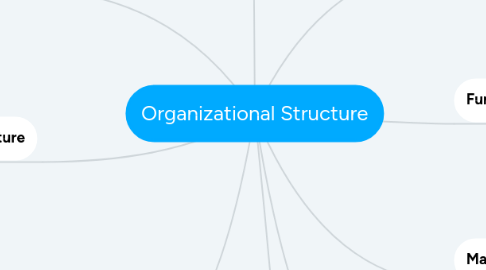
1. Divisional Structure
1.1. Where products, projects, or product markets are grouped internally.
1.2. Motives: Quicker response to changes in the market environment.
1.3. Pitfalls: Can be very expensive.
2. SBU Structure
2.1. Similar products or markets are grouped into units to achieve synergy.
2.2. Motives: Planning & control done by the corporate office.
2.3. Pitfalls: Can be difficult to achieve synergies .
3. Holding company Structure
3.1. Where businesses in a corporation’s portfolio are the result of unrelated diversification.
3.2. Motives: Cost savings due to fewer personnel and lower overhead.
3.3. Pitfalls: Corporate office has little control .
4. Boundaryless Designs
4.1. Organizations in which the boundaries, including vertical, horizontal, external, and geographical boundaries, are permeable.
4.1.1. Motives: Transaction costs between the firm and its suppliers are reduced.
4.1.1.1. Pitfalls: Relationships between individuals become more important than profits
4.2. Barries-free organization
4.2.1. Motives: Leverage the talents of all employees.
4.2.1.1. Pitfalls: Difficult to overcome political and authority boundaries inside and outside the organization.
4.3. Modular organization
4.3.1. Motives: Directs firm’s managerial and technical talent to the most critical activities.
4.3.1.1. Pitfalls: Inhibits common vision through reliance on outsiders.
4.4. Vistula organization
4.4.1. Motives: Enables the sharing of costs and skills.
4.4.1.1. Pitfalls: Leads to potential loss of operational control among partners.
5. Ambidextrous Designs
5.1. Organizational designs that attempt to simultaneously pursue modest, incremental innovations as well as more dramatic, breakthrough innovations.
5.2. Adaptability: managers’ exploration of new opportunities and adjustment to volatile markets in order to avoid complacency.
5.3. Alignment = managers’ clear sense of how value is being created in the short term and how activities are integrated and properly coordinated.
6. Simple Structure
6.1. The oldest & most common organizational.
6.2. Motives: Highly informal.
6.3. Pitfalls: Employees may not understand their responsibilities.
7. Functional Structure
7.1. Where the major functions of the firm are grouped internally.
7.2. Motives: Enhanced coordination & control.
7.3. Pitfalls: Impeded communication & coordination due differences in values.
8. Matrix Structure
8.1. Functional departments are combined with product groups on a project basis.
8.2. Motives: Increases market responsiveness.
8.3. Pitfalls: Can lead to power struggles & conflict .
9. International Operations
9.1. Multi-domestic Strategies use:
9.1.1. International division structure.
9.1.1.1. Geographic-area division structure .
9.2. Global Strategies use:
9.2.1. Worldwide functional structure .
9.2.1.1. Worldwide product division structure .
